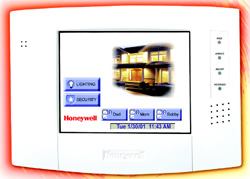The term “structured wiring” may not be first on the wish list for most home buyers, but the benefits and services a structured wiring package offers are making it easy for builders to sell the concept. With roughly half of new homes boasting some kind of data and video wiring system, the question for homeowners is not if they’ll install structured wiring but to what extent.
Those lifestyle perks include the ability to divvy up an Internet connection for every PC in the house, distributing the cable or satellite feed to any room, and providing a neat distribution center for all wires, routers, video amplifiers, and other electronic hardware.
Distributing data and video is the bare minimum now for the 21st-century home. Structured wiring systems are laying the foundation for shared audio, security, home control, and more. New and emerging technologies such as HDTV and streaming video will put more demands on the pipelines in the home, and as technology surges ahead, structured wiring packages are evolving to meet the needs of tomorrow’s homeowners.
Mark Cerasulo, director of A/V systems for Leviton Voice & Data, sees the acceptance of structured wiring paralleling that of the garage door opener. “It went from being the most futuristic gee-whiz thing you ever saw to something that would of course be included in a new house.” The wiring hub itself will become as mundane as the circuit breaker in the garage, he maintains. “Few people will think it’s special because every house will have one.”
The ANSI/TIA/EIA-570-B Residential Telecommunications Infrastructure Standard covers twisted-pair, coaxial, and fiber cabling; suggestions for alarm, home audio/video, energy management, and home automation systems; and telephone, video, and data. Grade 1, the minimum FCC requirement for telecommunications service for telephone, satellite, cable TV and data, calls for Category 5, with Cat 5e recommended.
Cat 5e is tested to a higher bandwidth and recommended for critical applications, according to Orrin Charm, systems architect of InfiniSys, a low-voltage design firm based in Daytona Beach, Fla. “They discovered that Cat 5 could meet all the specs but still have trouble with higher data speeds due to the way the pairs were twisted,” Charm says. Additional specs in the Cat 5e standard address those issues.
Grade 2 wiring requires a minimum of two four-pair cables and two coaxial cables—one for phone and one for data. Earlier-generation home networks could suffice with two pairs of the phone wire for data, Charm says, but faster gigabit Internet networks can easily make use of all four pairs. “We highly recommend that two pairs of Cat 5e cables be run,” he says. The same goes for the coax side, he says. One RG-6 cable can handle most ordinary TV services. A second is reserved for HDTV, multiple video sources, and internal distribution of cable signals.
Most people will want a Grade 2 installation and then some, Charm says. “It is up to the builder to decide what to install beyond Grade 1 minimums,” he says, “but a savvy builder will use Grade 2—or better infrastructure—as a marketing tool. Ideally you want more than two coax cables to each location to support the ever-expanding array of video services.”
The additional cost to homeowners is a little less than twice the cost of a Grade 1 installation for double the wire. There are ways to save money on installation, however. Wires configured in a Siamese construction place two cables side by side. “That’s a lot less labor since you’re only pulling one cable,” he notes. It’s possible to buy all four cables under a single jacket, too, he says.



